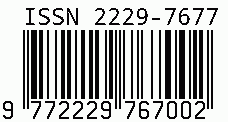
International Journal on Science and Technology
E-ISSN: 2229-7677
•
Impact Factor: 9.88
A Widely Indexed Open Access Peer Reviewed Multidisciplinary Bi-monthly Scholarly International Journal
Plagiarism is checked by the leading plagiarism checker
Call for Paper
Volume 16 Issue 4
October-December 2025
Indexing Partners



















CRIME RATE PREDICTION USING K- NEAREST NEIGHBORS (KNN) ALGORITHM
| Author(s) | Ms. Y REDDEMMA thirupathuru |
|---|---|
| Country | India |
| Abstract | Crime is a major problem in today’s world, and it is a threat to global security. The population of cities is constantly increasing, resulting in an increase in crime rates. Officials are tasked with the monumental challenge of accurately predicting future crime rates and attempting to reduce them. To help in this regard, various large datasets have been reviewed, extracting information such as location and crime type. Crime prediction utilizes various methods to identify areas that are likely to experience higher levels of crime. Given a set of historical crime data, develop a predictive model to identify areas of high risk for future criminal activity, to improve the accuracy of crime prevention and policing efforts. These methods include analyzing past crime data, identifying crime hotspots, and utilizing predictive analytics. The main aim of this paper is to develop a system that can accurately predict crime rates and identify potential future crime trends. This information can then be used by officials to devise strategies to reduce crime rates and create a safer environment. To predict the crime rate (dependent variable) based on the year, location, and type of crime (independent variables), various types of machine learning algorithms will be applied. The system will examine how to convert the crime information into a regression problem, thus helping the officials to solve crimes faster. Crime analysis using available information to extract patterns of crime. Based on the territorial distribution of existing data and the recognition of crimes, various multi-linear regression techniques can be used to predict the frequency of crimes. The proposed system will focus on converting the crime prediction task into a regression problem, wherein the crime rate (dependent variable) is predicted based on independent variables such as year, location, and type of crime. Various machine learning algorithms, including multi-linear regression techniques, will be applied to model the relationships between these variables and the frequency of crimes. Through rigorous analysis of past crime data, the system will identify crime hotspots and provide predictive analytics to assist in proactive crime prevention strategies. Moreover, this project will delve into the spatial and temporal distribution of crimes, using geographic information systems and clustering algorithms to identify areas that are statistically more prone to criminal activity. By recognizing patterns in crime distribution, the system will offer predictive insights that can be instrumental in strategic planning for law enforcement operations. The ultimate objective is to create a safer environment by enabling officials to not only react to crimes more effectively but also to take preemptive measures based on data-driven predictions. The findings and methodologies developed through this paper will have broad applications in urban planning, public safety, and policy-making, contributing to the broader efforts of reducing crime rates and enhancing the security of urban populations. The integration of machine learning models with real-time data will pave the way for innovative approaches to crime prevention, ultimately leading to safer and more resilient communities. |
| Keywords | Prediction algorithms, Machine Learning, Predictive models, K-Nearest Neighbor, Crime Prevention, Classification Task, Recurrent Neural Network, Mean Absolute Percentage Error, Machine Learning Prediction, Neighborhood Crime, Crime Data, Crime Patterns, Crime Reports, Anomaly Data, Crime prediction, crime datasets, smart policing, Mean Squared Error. |
| Field | Engineering |
| Published In | Volume 16, Issue 1, January-March 2025 |
| Published On | 2025-03-05 |
| DOI | https://doi.org/10.71097/IJSAT.v16.i1.7142 |
| Short DOI | https://doi.org/g92nt7 |
Share this


CrossRef DOI is assigned to each research paper published in our journal.
IJSAT DOI prefix is
10.71097/IJSAT
Downloads
All research papers published on this website are licensed under Creative Commons Attribution-ShareAlike 4.0 International License, and all rights belong to their respective authors/researchers.

